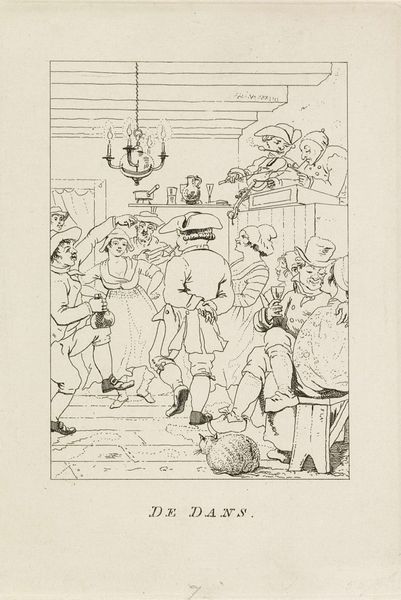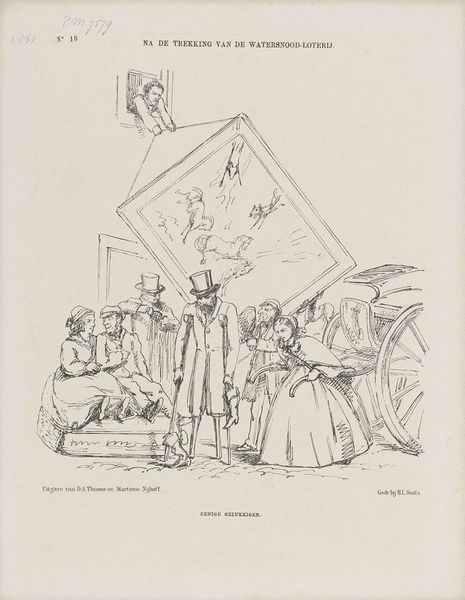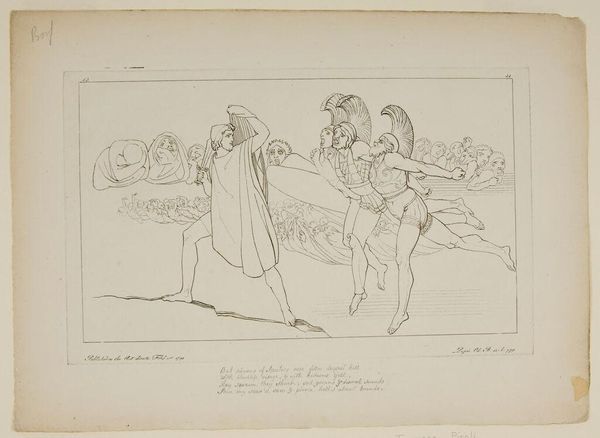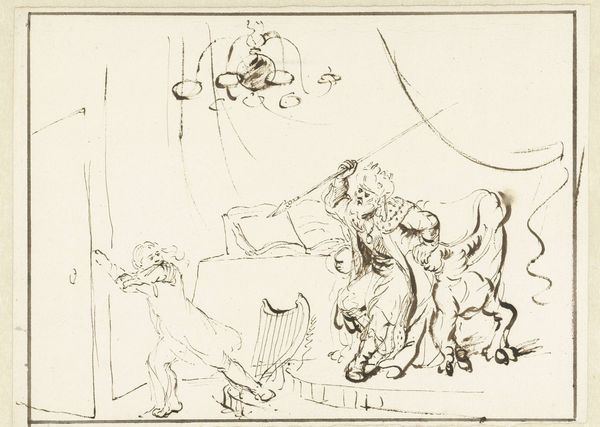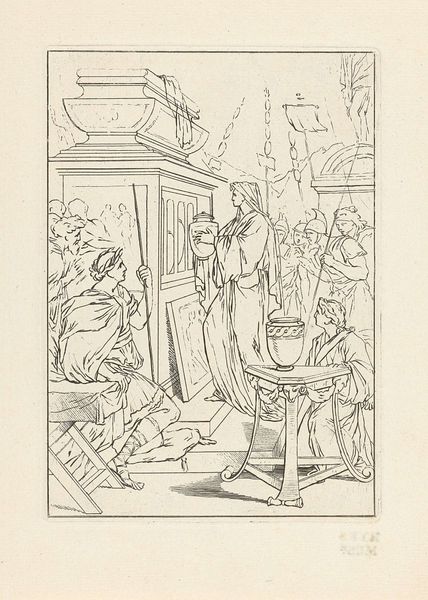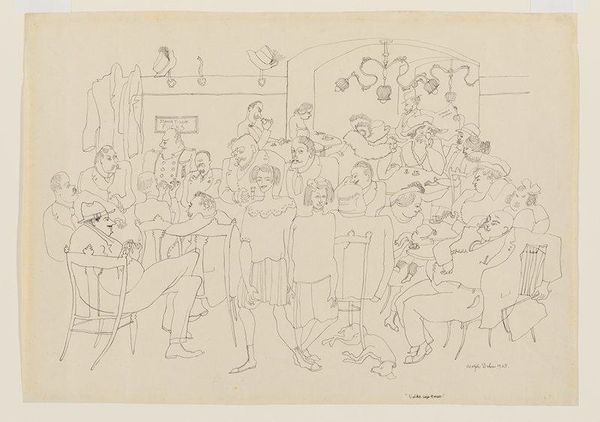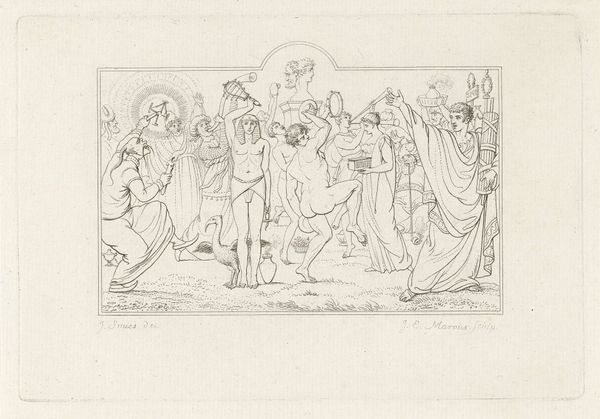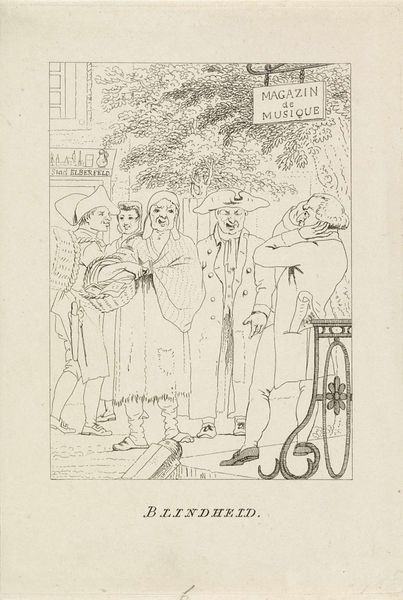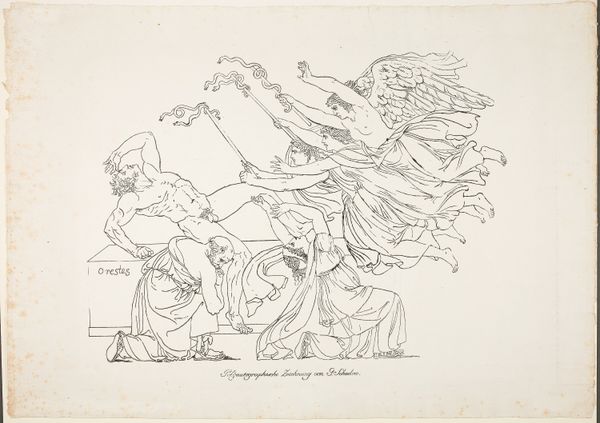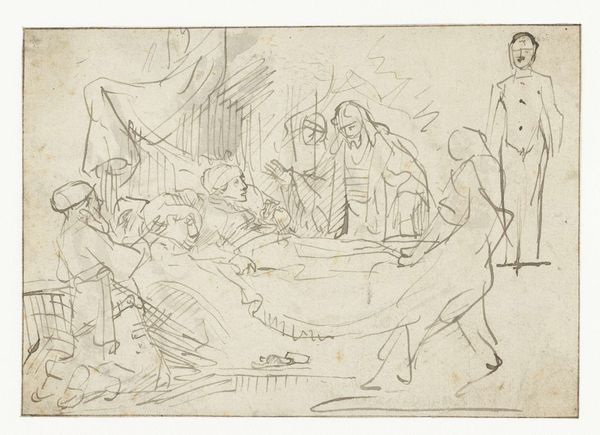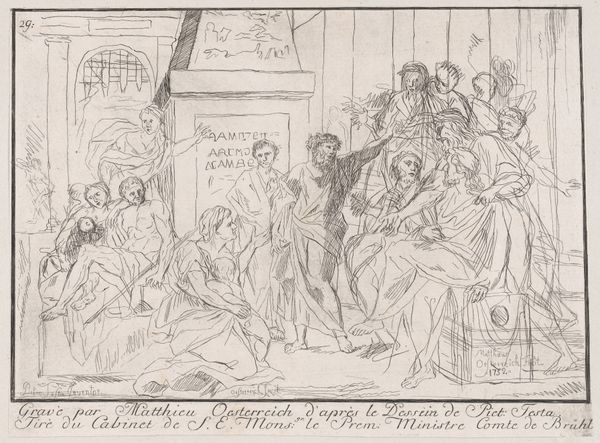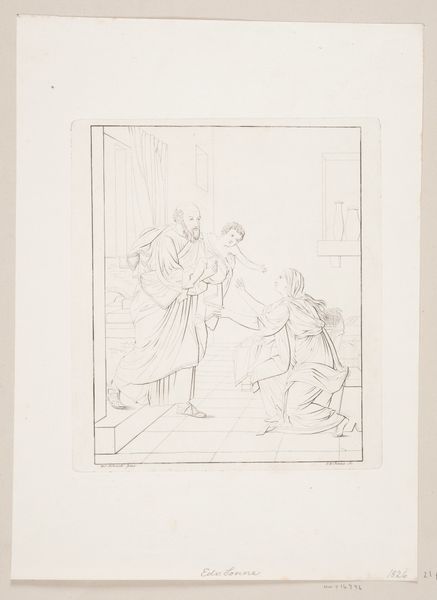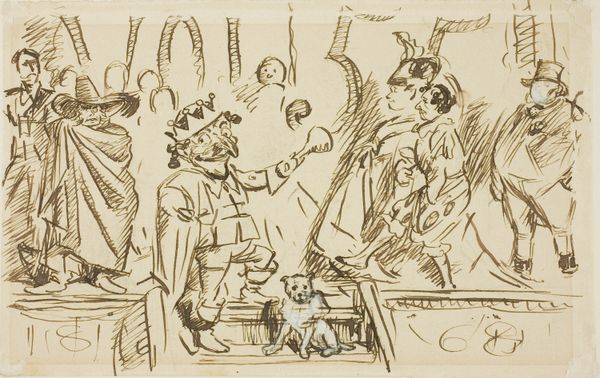
drawing, etching, ink, pen
#
drawing
#
comic strip sketch
#
narrative-art
#
pen sketch
#
etching
#
personal sketchbook
#
ink
#
idea generation sketch
#
sketchwork
#
ink drawing experimentation
#
romanticism
#
pen-ink sketch
#
sketchbook drawing
#
pen
#
genre-painting
#
history-painting
#
storyboard and sketchbook work
#
sketchbook art
Dimensions: height 193 mm, width 132 mm
Copyright: Rijks Museum: Open Domain
Curator: Look at this ink and pen drawing by Jacob Ernst Marcus from 1803, titled "Lachend publiek bij een sc\u00e8ne op toneel" or "Laughing audience at a scene on stage." Editor: My initial reaction is that it's riotous! The exaggerated expressions, the chaotic composition—it feels almost carnivalesque. Curator: Exactly! Marcus captures a moment of intense emotional display. But consider the imagery: we have the collapsing figure being assaulted, then Voltaire himself above as if a muse. It raises questions. Is this a tribute or a satire? Editor: I’d lean toward satire, given the period and the somewhat clumsy execution of the figures. Remember, Romanticism was challenging Enlightenment ideals, and theater was a key site for social commentary. Perhaps Marcus is commenting on the performative nature of societal praise, of "reward" as the title translates. Curator: It's fascinating how the sketch-like quality emphasizes this ambiguity. The frantic lines evoke movement but also uncertainty. Also the text "Belooning" and "Beltoneene," that are at the bottom, add another later to the puzzle. Notice also all those theatrical wreathes held by members of the audience; their simple forms contrast with the main subject's elaborate robes, which could imply that everyone present at the performance had something to contribute to the play. Editor: Right, the visible process becomes part of the meaning. The incomplete feeling mirrors the instability of social conventions. I find myself wondering about the context in which this image would have circulated—a small engraving is one thing but in what circles was it likely seen and understood? How would the meaning be perceived? Curator: Good questions! Remember that Marcus was working within the burgeoning public sphere, the Dutch "verenigingswezen," if you will. Consider what an artist puts forward in relation to this political and social sphere. This piece in its medium and themes engages that history quite well. Editor: For me, understanding this work involves considering the broader theatrical landscape of early 19th-century Netherlands, its anxieties and evolving values. I can’t help but reflect how theater creates its own truths. Curator: And perhaps those "truths" are always, in some way, a performance themselves. Thanks for giving the stage to such an image. Editor: The pleasure was all mine. These drawings always tell a good story.
Comments
No comments
Be the first to comment and join the conversation on the ultimate creative platform.
